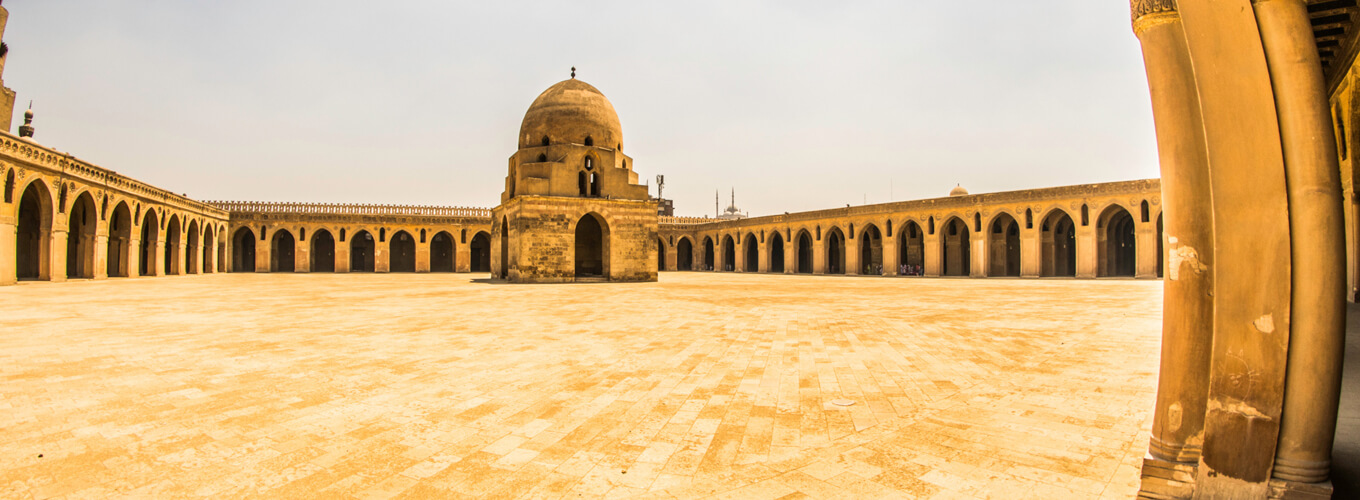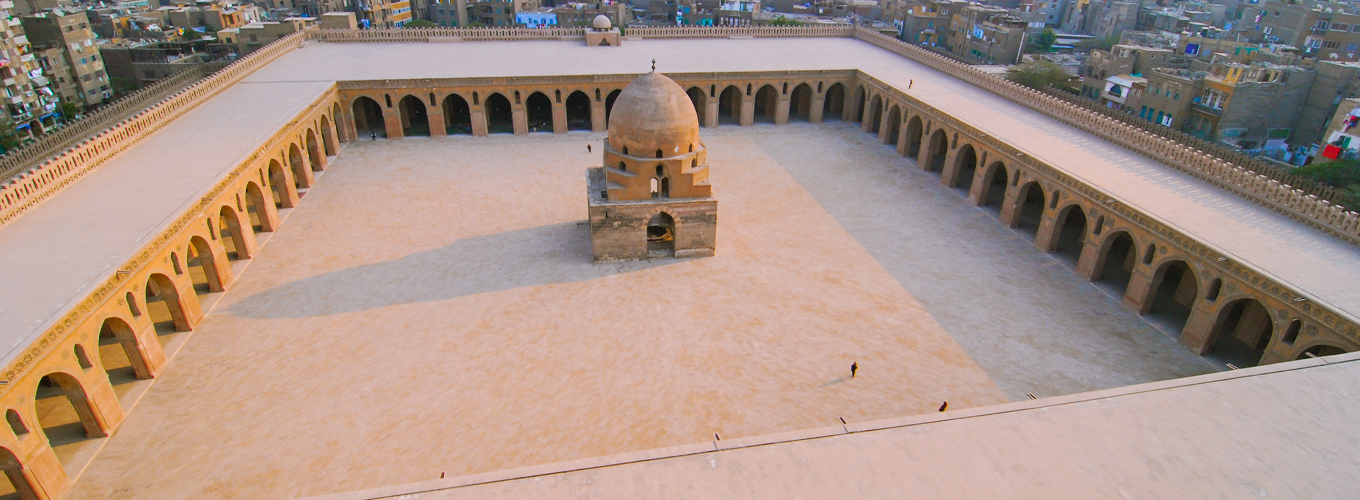Hurghada Red Sea Egypt in 2026 is one of the most dazzling and dyna...

The Mosque of Ibn Tulun is one of Cairo’s most remarkable monuments, known for its vast open courtyard, unique spiral minaret, and historical significance. Built in the 9th century, it remains the oldest mosque in Egypt still preserved in its original form. For travelers, visiting this mosque offers not only a journey into Islamic history but also a chance to experience tranquility in the heart of bustling Cairo.
Its architectural features and serene atmosphere make it a must-see destination for those who wish to explore Egypt’s spiritual and cultural heritage. Standing within its walls, visitors gain insight into a period when Islamic architecture was flourishing, leaving behind a structure that has inspired generations.
The mosque was commissioned by Ahmad Ibn Tulun, the founder of the Tulunid dynasty, who ruled Egypt between 868 and 884 AD. Constructed in 876 AD, it was designed to serve as the central mosque for his new capital city, Al-Qata’i, which was built near Fustat. Unlike many mosques that underwent frequent modifications, the Mosque of Ibn Tulun has retained much of its original character, making it a rare example of early Islamic architecture.
Throughout history, it has survived fires, invasions, and urban changes, yet it still stands as a testimony to Egypt’s resilience. The mosque was used not only for prayer but also as a community gathering place, reinforcing its role as a social and religious cornerstone. Today, it is considered one of the most important historical landmarks in Cairo and continues to attract scholars, historians, and travelers from around the world.
The architecture of the Mosque of Ibn Tulun is distinctive and reflects Abbasid influences, as Ahmad Ibn Tulun himself was inspired by the Great Mosque of Samarra in Iraq. The mosque is built around a vast open courtyard, surrounded by arcaded halls with pointed arches. Its most striking feature is the spiral minaret, which is unlike any other in Egypt and is thought to have been inspired directly by Samarra’s minarets.
The walls are made of red brick, and many sections are adorned with carved stucco decorations that showcase intricate geometric and floral patterns. The mosque’s design emphasizes simplicity, space, and symmetry, creating a peaceful atmosphere for worshippers and visitors alike. Walking through the arcades, one can appreciate the elegance of early Islamic architecture and its timeless appeal, which has influenced later Egyptian and Islamic structures for centuries.

The mosque holds a special place in the religious and cultural fabric of Cairo. It was originally intended to accommodate the entire population of Ibn Tulun’s capital during Friday prayers, emphasizing its role as a unifying center for the community. Over the centuries, the mosque has symbolized the spread of Islamic art and architecture beyond its original centers in Iraq and Persia. For locals, it represents continuity, as it has remained a functioning mosque since its construction.
For visitors, it provides a glimpse into the early Islamic era, where religion, governance, and community life were deeply intertwined. The mosque’s ability to withstand centuries of change while maintaining its original function speaks to its enduring cultural significance, making it not just a religious site but a living piece of Cairo’s heritage.
One of the defining features of the Mosque of Ibn Tulun is its spiral minaret. Standing apart from the main structure, the minaret’s design is a rarity in Egypt and has intrigued architects and travelers for centuries. The external staircase winds around the tower, offering a distinctive profile against Cairo’s skyline. Visitors who climb the staircase are rewarded with sweeping views of Old Cairo, including other historic mosques and landmarks.
The minaret’s form symbolizes a bridge between Egyptian and Abbasid architectural traditions, reinforcing the mosque’s role as a cultural link between regions. For many travelers, climbing the minaret becomes a highlight of their visit, combining adventure with historical exploration and providing one of the most memorable experiences in Cairo.
The best time to visit the Mosque of Ibn Tulun is between October and April, when Cairo’s weather is more comfortable for walking and exploring. Mornings are ideal for experiencing the mosque in relative quiet, with soft light illuminating the courtyard and arcades. Afternoons offer dramatic lighting for photography, as the sun casts shadows across the arches.
Fridays can be busier due to congregational prayers, but they also provide an authentic glimpse of the mosque’s religious life. Visitors who prefer fewer crowds may choose weekdays, when the mosque is generally calmer. Regardless of the season, the mosque’s open design ensures that it remains cool and breezy, offering a peaceful retreat from the city’s bustle.
To make the most of your visit, a few practical considerations are helpful. Modest clothing is required, as the mosque remains an active place of worship; women are advised to cover shoulders and knees, and men should avoid shorts. Shoes must be removed before entering the prayer halls, so wearing easily removable footwear is recommended. Bringing a local guide enriches the visit, as they can share stories about the mosque’s construction, symbolism, and historical role.
Allow at least one to two hours to explore the mosque fully, including climbing the minaret. Photography is welcomed, but travelers should be respectful of worshippers. Combining a visit to the Mosque of Ibn Tulun with nearby sites such as the Gayer-Anderson Museum or the Mosque of Sultan Hassan creates a rich cultural itinerary in Old Cairo.

The Mosque of Ibn Tulun is often included in guided tours of Islamic Cairo, along with other prominent mosques and landmarks. Many travel agencies offer private tours that allow travelers to explore the mosque at a leisurely pace while learning about its history and architecture. A typical day tour might combine the mosque with visits to the Citadel, Sultan Hassan Mosque, and Khan el-Khalili Bazaar.
For travelers with more time, multi-day itineraries often include the mosque as part of a broader exploration of Cairo’s Islamic and Coptic heritage. Visiting the mosque as part of a curated tour ensures that travelers not only see the site but also understand its significance within Egypt’s wider cultural and historical landscape.
Visitors to the Mosque of Ibn Tulun often describe a sense of serenity that contrasts with the busy streets of Cairo. The vast open courtyard and symmetrical arcades create a calming environment that encourages reflection and appreciation. Many travelers are fascinated by the spiral minaret and the opportunity to climb it, describing the panoramic views as unforgettable.
Photographers particularly enjoy capturing the mosque’s arches, light play, and architectural details. Others highlight the authenticity of the site, noting how it feels less commercialized than some of Cairo’s other landmarks. Overall, the experience of visiting the mosque leaves travelers with a deeper connection to Cairo’s Islamic heritage and a strong appreciation for its architectural brilliance.
The Mosque of Ibn Tulun stands as a timeless monument, representing the beauty of early Islamic architecture and the vision of Ahmad Ibn Tulun. Its unique spiral minaret, vast courtyard, and enduring role as a place of worship make it one of Cairo’s most fascinating landmarks.
For travelers, it offers a rare opportunity to step back in time and experience a mosque that has remained largely unchanged for over a thousand years. Whether you are captivated by history, architecture, or cultural exploration, the Mosque of Ibn Tulun provides a memorable and meaningful experience. Including it in your Cairo itinerary ensures that your journey through Egypt is both enriched and unforgettable.
We offer tours to Egypt’s most famous destinations such as the Pyramids and Sphinx in Giza, Karnak Temple and Luxor, Valley of the Kings, Sharm El Sheikh and Hurghada for beaches and diving, and Alexandria.
We provide organized tours, luxury hotel and resort bookings, comfortable transportation services, experienced tour guides, and activity ticket bookings such as diving, desert safaris, and Nile cruises.